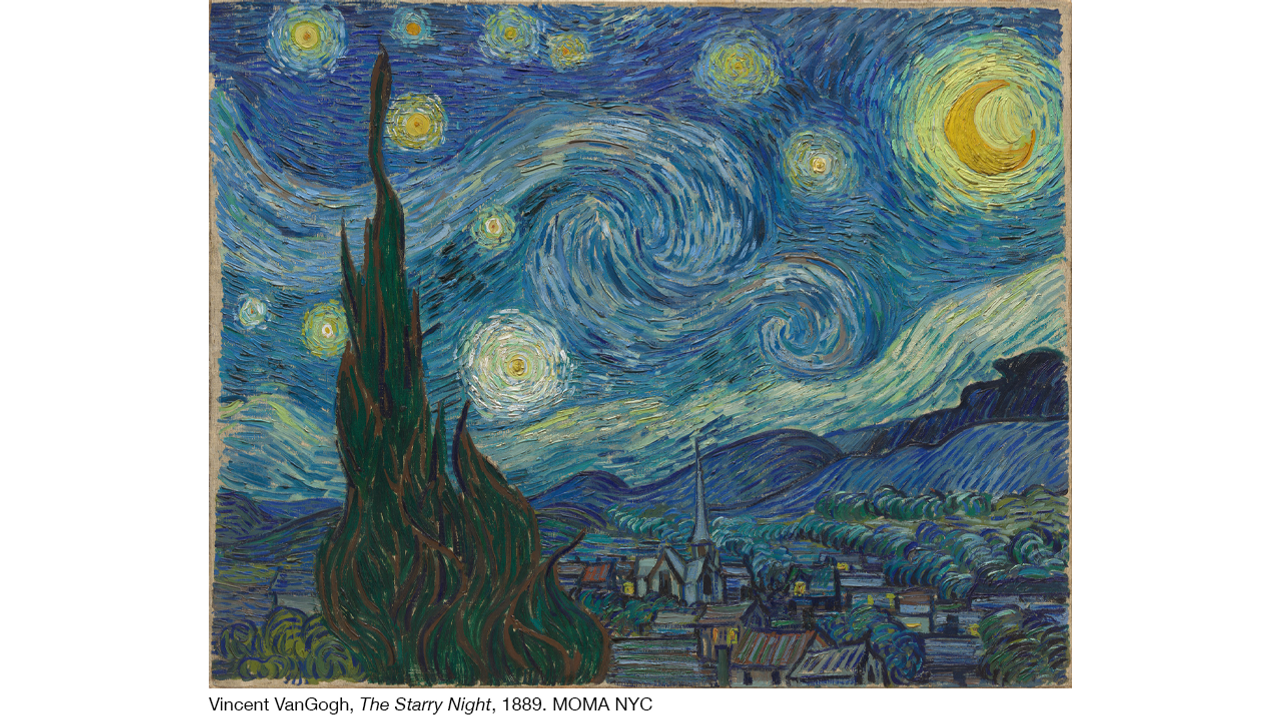
Do You Know The Starry Night?
12/23/2021
Of course you do…if you’ve been any where near art or know something about art. It’s a popular, iconic painting, famous and overexposed to say the least and printed on everything.
If you can set this aside, you still see its power has never diminished; visually, emotionally, coloristically and in the manner of direct painting, the immediacy and vigor of its application. It is alive, vibrant, as though freshly painted.
In 1889 over the course of a year Van Gogh made a series of 15 landscape paintings based on a window view from the asylum in St. Remy. One of those paintings, the only night view, was The Starry Night. Painted over the course of a few days; part from imagination and part from elements seen out the window.
In notes to his brother Theo, Vincent mentions painting the moon and the “morning star” (also known as Venus). He started this painting soon after watching the night sky — early, early in the morning while it was still dark. Research shows that indeed during that time period in that region Venus was appearing in the (very) early morning sky.
A few days prior to this writing I had no idea Van Gogh used the original form of Indian Yellow in Starry Night. In a scientific pigment analysis it was found Starry Night was painted with the rare form of Indian Yellow as well as zinc yellow (a cool yellow) for the moon and stars. Cobalt blue and ultramarine blue were used for the night sky.
A larger view of the painting is below; I will let it speak for itself. Enjoy.
P.S. Next week I write about RED!
P.P.S. For this article I referenced articles from Winsor and Newton (Spotlight on Indian Yellow), and Wikipedia (The Starry Night).
Vincent Van Gogh, The Starry Night, St. Remy, 1889. MOMA NYC


